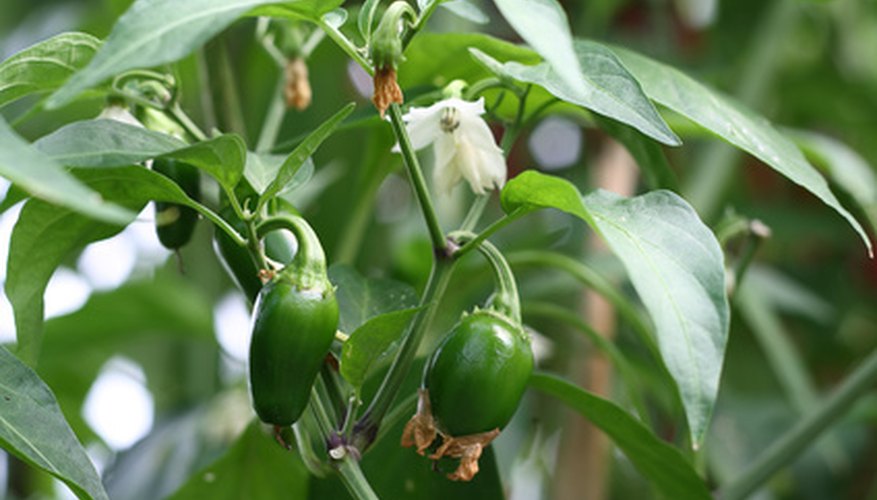Peppers are warm-season vegetables known for hot or sweet flavours and tender textures. They may grow as perennials in very warm climates and as annual crops in temperate and colder climates. Sweet pepper varieties such as bell peppers have traditionally been favourites in the United States. Hot varieties complement many regional and ethnic cuisines and are also popular. Their cycle from seed to harvest completes in less than three months.
Seeds
Peppers are best started from seeds indoors in late winter and then transplanted into the garden after the soil and air have warmed in the spring. Seed packets are often available from home and garden stores and can include single breeds or variety packs of mixed pepper seeds.
Seedlings
When you transplant the seedlings, give them a starter fertiliser. Pepper seedlings grow best when frost is passed and night temperatures remain above 12.8 degrees Celsius. If weather is cold, the plants may grow very slowly. Leaves may yellow and blossoms drop. Using raised beds with good drainage and well-nourished soil covered with mulch may help very young plants.
- When you transplant the seedlings, give them a starter fertiliser.
- Using raised beds with good drainage and well-nourished soil covered with mulch may help very young plants.
Mature Plants
Weather conditions can affect pepper plants. If weather is very cold early in the season, it can prevent fruit from developing even on large, dark green plants. Later in the season, dry, hot winds during the day and nights that remain above 21.1 degrees Celsius may prevent the formation of fruit.
Fruit Set
When fruits first form, apply a supplement of fertiliser. Moisture applied uniformly helps prevent loss of the fruit before full maturity. Dry hot winds can take a toll on peppers, so watering uniformly is essential—especially when the plants approach or are in harvest.
Fruit Harvest
Sweet peppers are often harvested in an immature state while hot peppers are often harvested red and ripe. The choice depends on the type of cuisine desired. Mature fruit breaks off the plant easily, but cutting the fruit is likely to damage the plant.
Sweet varieties grow to harvest as follows: Gypsy peppers take about 65 days. Bell peppers are harvestable in about 70 days. Hot peppers, such as cayenne and jalapeño, can ripen in 70 days. Red chilli peppers may take longer, about 84 days. Sweet peppers, such as green bell peppers, can be harvested from July to October in warmer climates. Summers that are long, dry and hot produce flavourful hot chilli peppers.
- Sweet peppers are often harvested in an immature state while hot peppers are often harvested red and ripe.
- Sweet varieties grow to harvest as follows: Gypsy peppers take about 65 days.
Common Problems
Pepper plants, unless they are resistant, can develop tobacco mosaic disease. If you smoke or handle tobacco, wash with soapy water before you handle pepper plants.
- Pepper plants, unless they are resistant, can develop tobacco mosaic disease.
Aphids can accumulate on the undersides of leaves. Spray with appropriate insecticide.
Bacterial diseases can also affect pepper plants. Before purchasing plants, check for spots on leaves and cankers on stems.
Peppers may be affected with blossom end rot, a condition that results in dry, blackened, sunken ends on the fruit. The condition is usually related to a need for watering with regularity. Mulching and irrigation should help prevent the condition.
